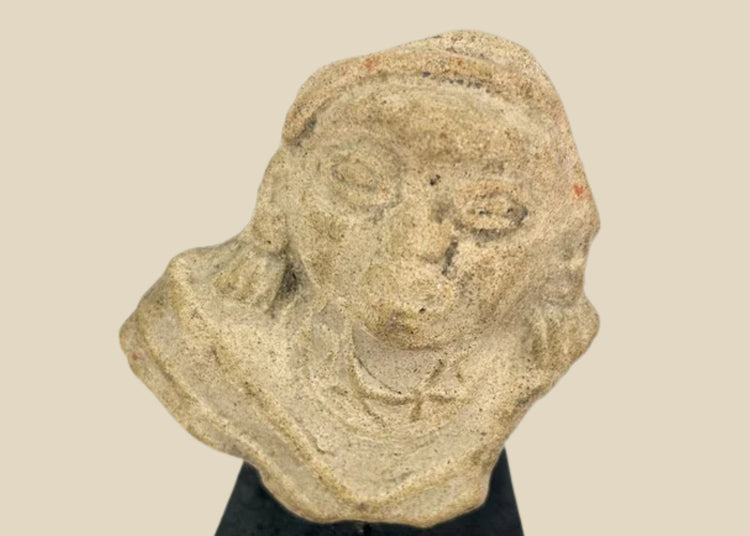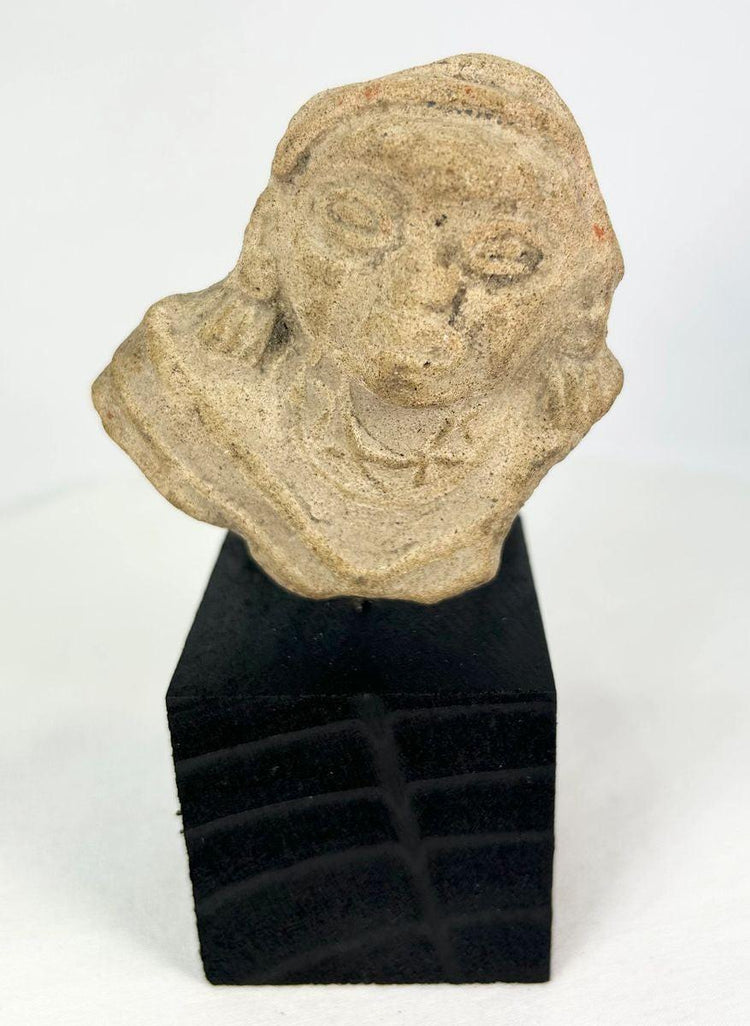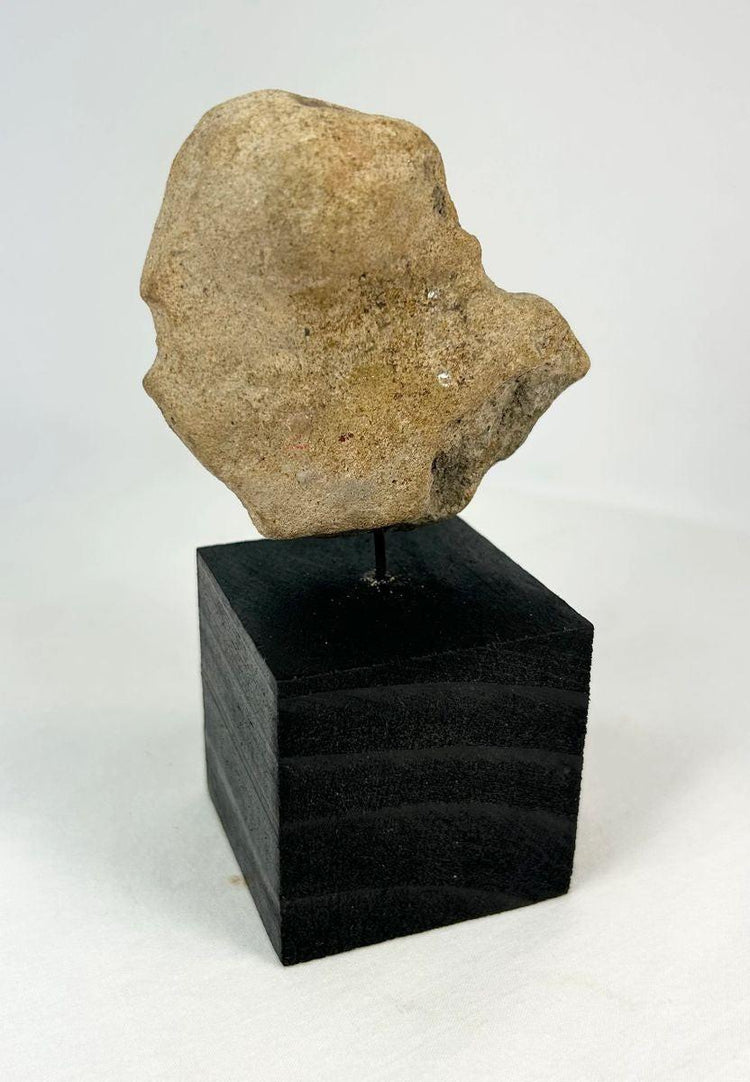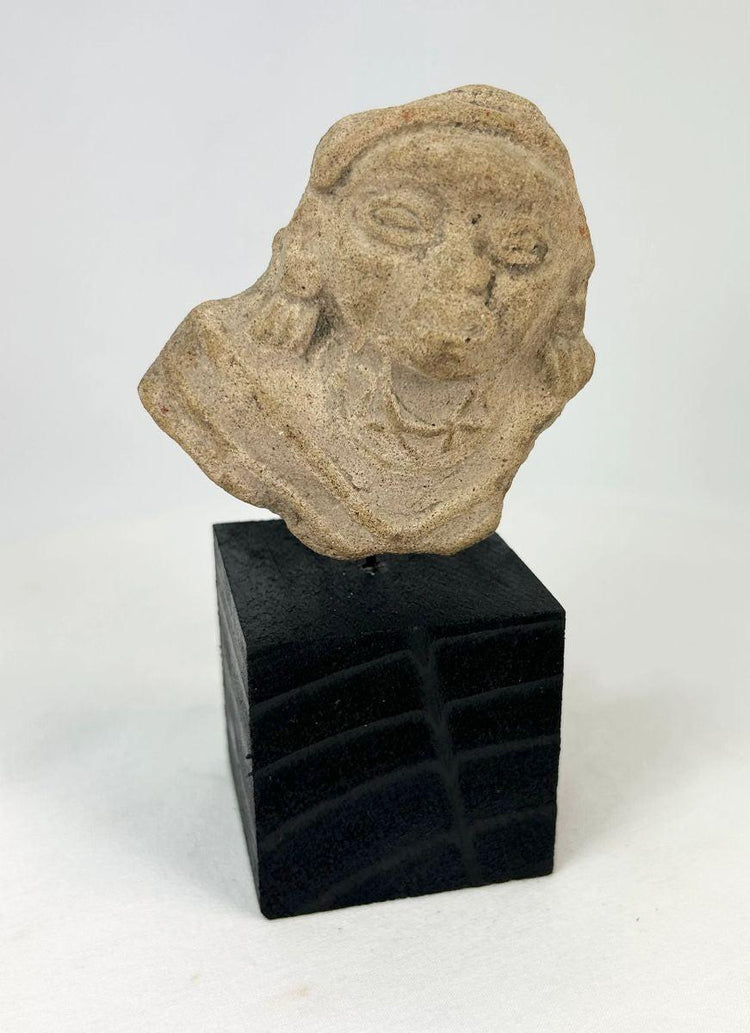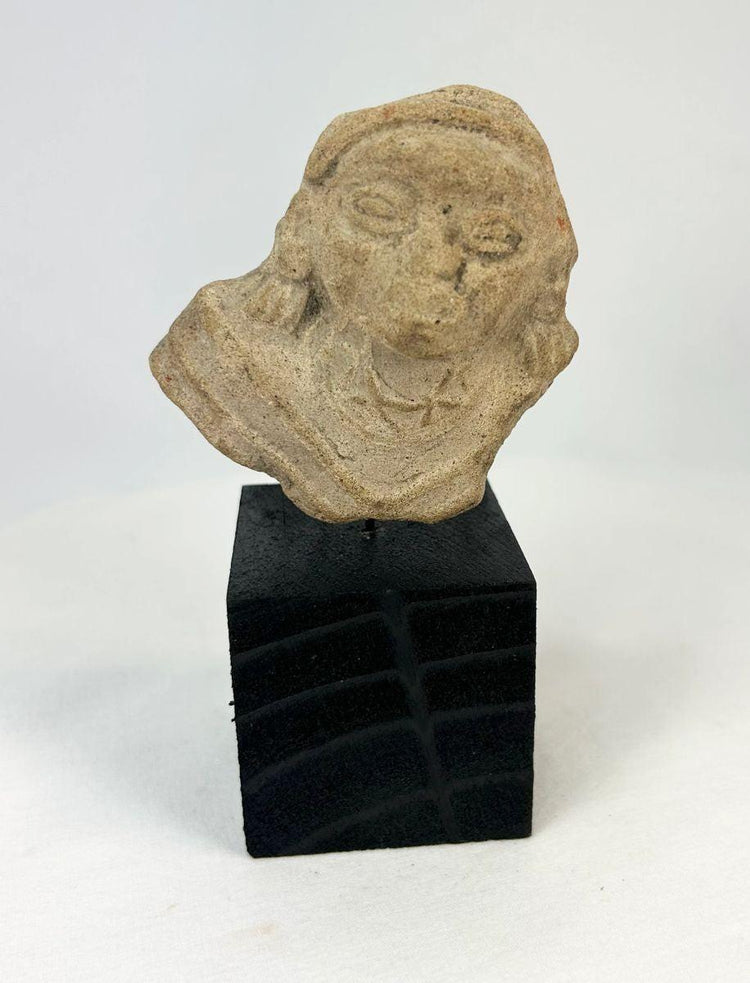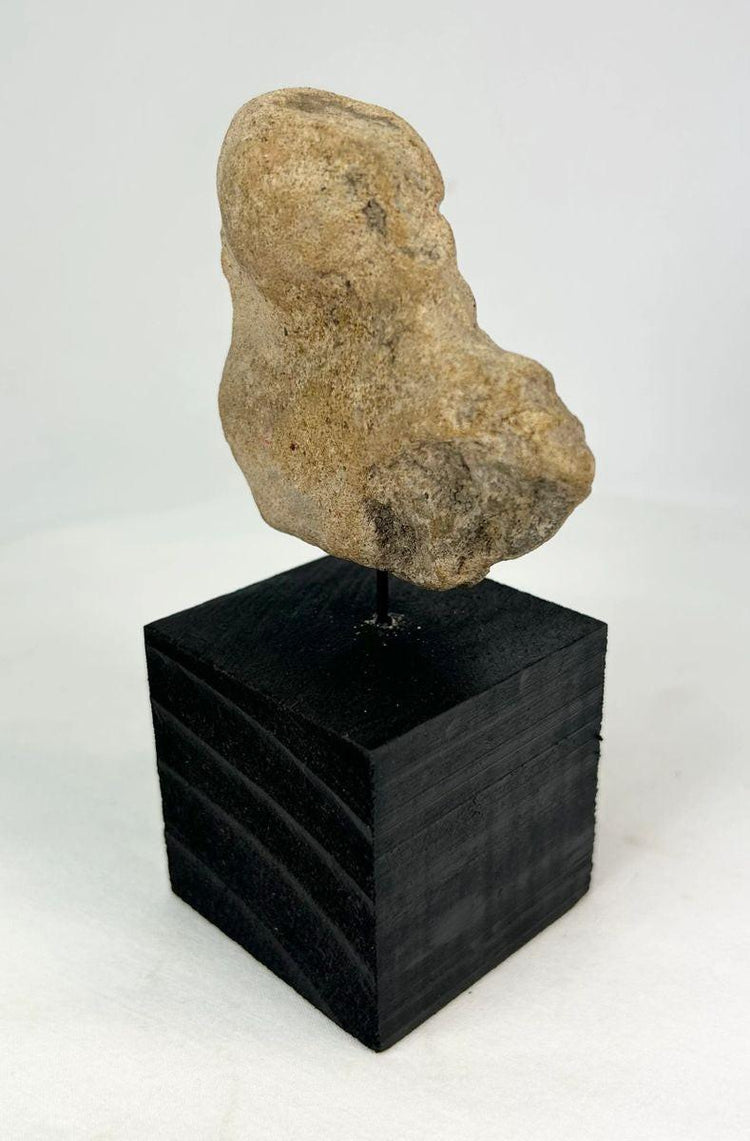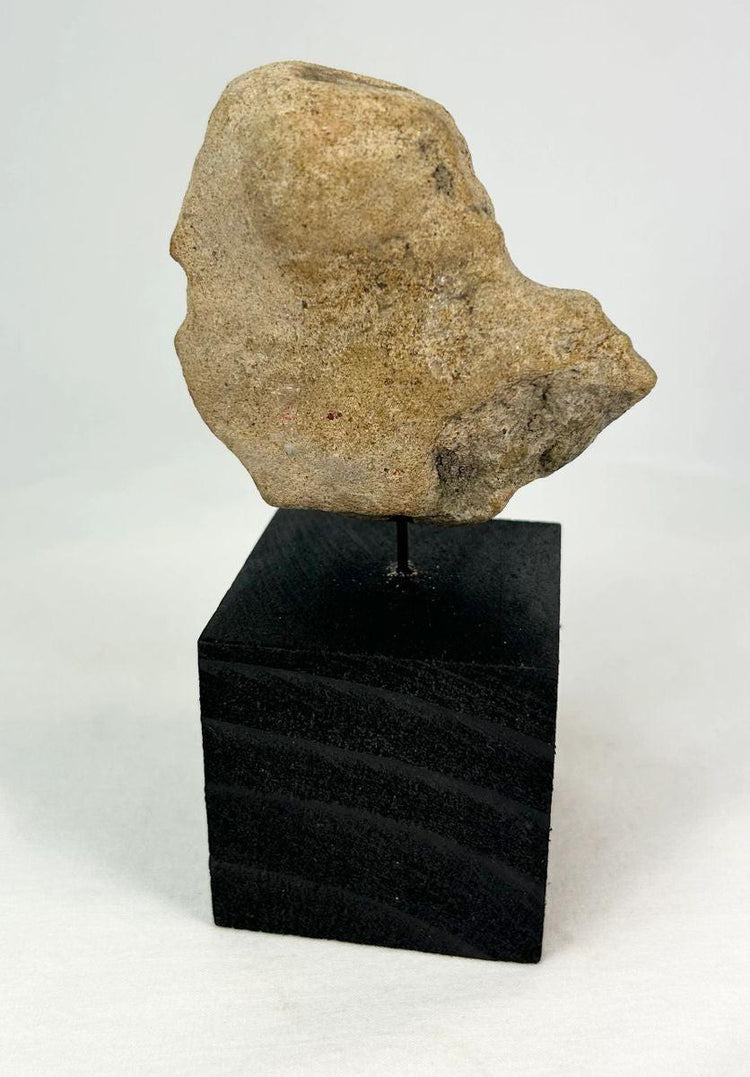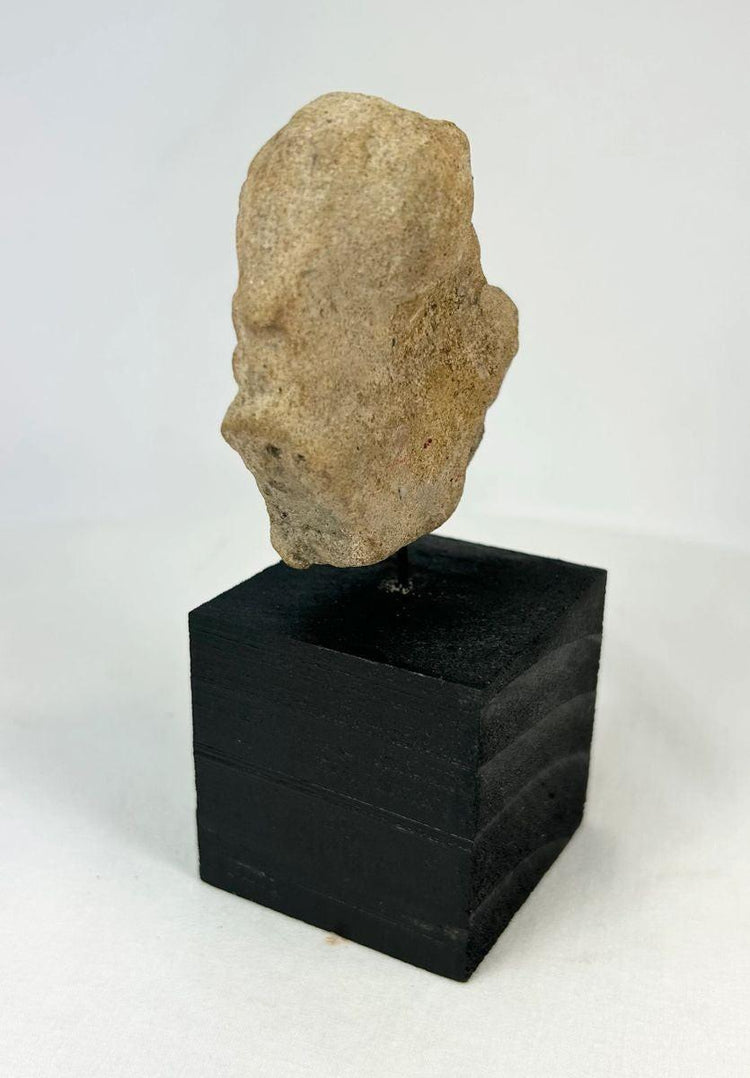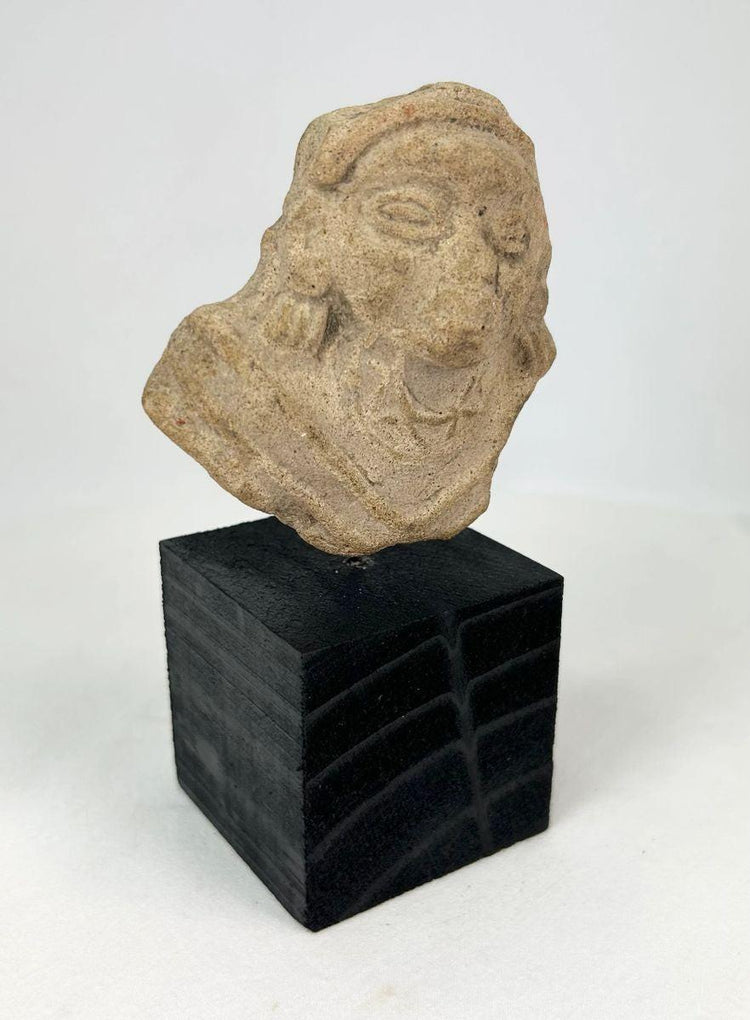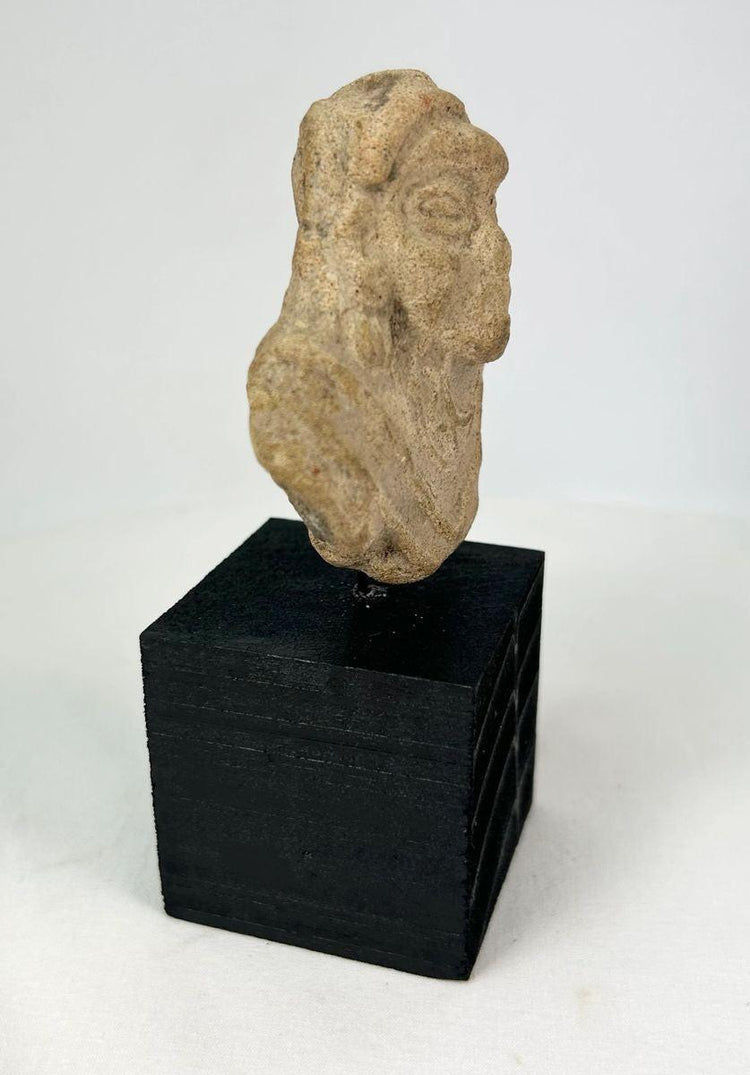Ancient Terracotta Figure Fragment | West Mexico (Nayarit/Jalisco) or Iberian Peninsula | Circa 200 BCE–300 CE
Description
More
Less
Historical Context & Origin
Region: Likely West Mexico (Nayarit or Jalisco) or Iberian Peninsula
Material: Terracotta (fired clay)
Period: Circa 200 BCE – 300 CE (if Mesoamerican) or Circa 1st Century BCE – 2nd Century CE (if Roman provincial/Iberian)
Description
This sculptural fragment represents the upper portion of a stylized anthropomorphic figure, modeled in terracotta. The broad face features almond-shaped eyes, a prominent nose, and parted lips—perhaps in mid-speech or song. Traces of ear flares or headdress survive at the sides of the head, with faint incised details suggesting draped clothing or decorative chest patterning. The reverse is rough and unworked, indicating that it was originally affixed to a larger vessel, architectural element, or complete figure intended for tomb or ceremonial display. It is now presented on a modern museum-style stand.
Features
- Stylized human visage with exaggerated features
- Faint traces of pigmentation or mineral encrustation
- Hand-modeled terracotta with incised details for folds and adornment
- Reverse unworked, indicating attachment to a larger object
- Mounted on a custom wood base with central pin support
Cultural Significance
Both West Mexican and Iberian/Roman traditions employed terracotta figures in funerary and ritual contexts. They often represented ancestors, deities, or symbolic figures and were placed in tombs or shrines as offerings. The abstracted features of this piece suggest associations with ceremonial masks, ritual performance, or symbolic oration. Fragments such as this provide valuable insight into artistic traditions that balanced abstraction with cultural storytelling.
Condition
Good archaeological condition. Losses to lower portions and back. Surface weathering consistent with long-term burial. Stable, with no active flaking. Securely mounted.
Dimensions (approximate)
Height (with base): 5 in
Width: 2 in
Depth: 2 in
Age
Circa 200 BCE – 300 CE (if Mesoamerican)
or
Circa 1st Century BCE – 2nd Century CE (if Iberian/Roman provincial)
Description
Historical Context & Origin
Region: Likely West Mexico (Nayarit or Jalisco) or Iberian Peninsula
Material: Terracotta (fired clay)
Period: Circa 200 BCE – 300 CE (if Mesoamerican) or Circa 1st Century BCE – 2nd Century CE (if Roman provincial/Iberian)
Description
This sculptural fragment represents the upper portion of a stylized anthropomorphic figure, modeled in terracotta. The broad face features almond-shaped eyes, a prominent nose, and parted lips—perhaps in mid-speech or song. Traces of ear flares or headdress survive at the sides of the head, with faint incised details suggesting draped clothing or decorative chest patterning. The reverse is rough and unworked, indicating that it was originally affixed to a larger vessel, architectural element, or complete figure intended for tomb or ceremonial display. It is now presented on a modern museum-style stand.
Features
- Stylized human visage with exaggerated features
- Faint traces of pigmentation or mineral encrustation
- Hand-modeled terracotta with incised details for folds and adornment
- Reverse unworked, indicating attachment to a larger object
- Mounted on a custom wood base with central pin support
Cultural Significance
Both West Mexican and Iberian/Roman traditions employed terracotta figures in funerary and ritual contexts. They often represented ancestors, deities, or symbolic figures and were placed in tombs or shrines as offerings. The abstracted features of this piece suggest associations with ceremonial masks, ritual performance, or symbolic oration. Fragments such as this provide valuable insight into artistic traditions that balanced abstraction with cultural storytelling.
Condition
Good archaeological condition. Losses to lower portions and back. Surface weathering consistent with long-term burial. Stable, with no active flaking. Securely mounted.
Dimensions (approximate)
Height (with base): 5 in
Width: 2 in
Depth: 2 in
Age
Circa 200 BCE – 300 CE (if Mesoamerican)
or
Circa 1st Century BCE – 2nd Century CE (if Iberian/Roman provincial)
You May Also Like






























